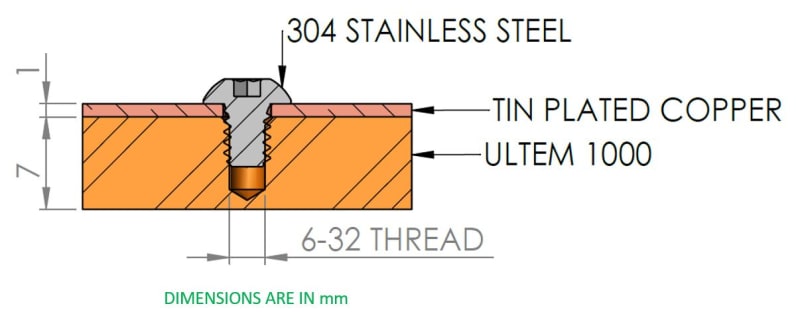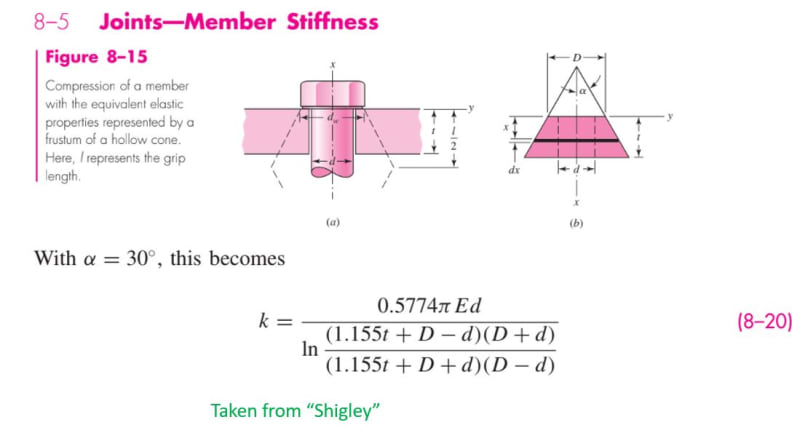elinah34
Mechanical
- Aug 19, 2014
- 149
Hello everyone,
I guess you all know the familiar formulas for calculating stiffnesses of the bolt and the members in a classic bolted joint. Classic = when all the components (bolt and members) are made of metals (aluminum, steel etc.).
But it becomes complicated in my case - a bolted joint in which the bolt is made of stainless steel and the members are made of plastic (Ultem 1000).
I found out that using the classical formulas (look at the attached file) for calculating the stiffness of the members lead to incorrect results.
Your help will be blessed.
I guess you all know the familiar formulas for calculating stiffnesses of the bolt and the members in a classic bolted joint. Classic = when all the components (bolt and members) are made of metals (aluminum, steel etc.).
But it becomes complicated in my case - a bolted joint in which the bolt is made of stainless steel and the members are made of plastic (Ultem 1000).
I found out that using the classical formulas (look at the attached file) for calculating the stiffness of the members lead to incorrect results.
Your help will be blessed.


